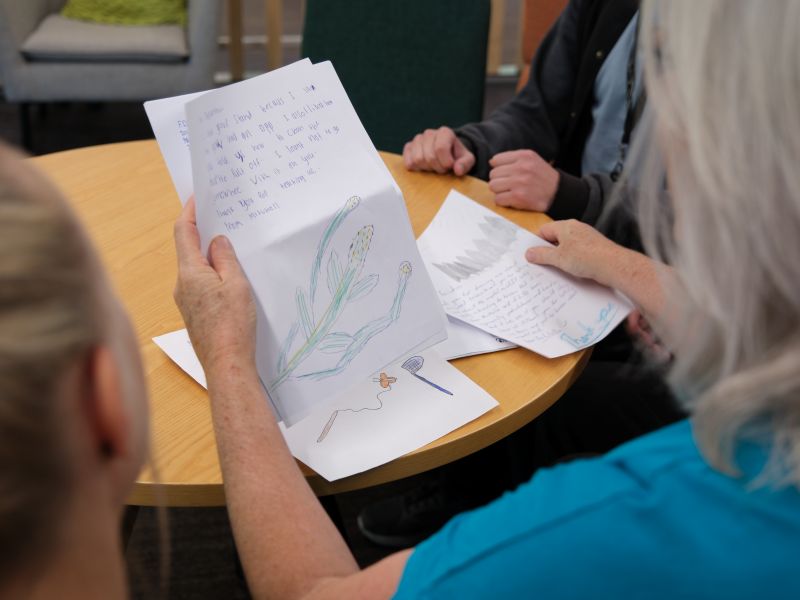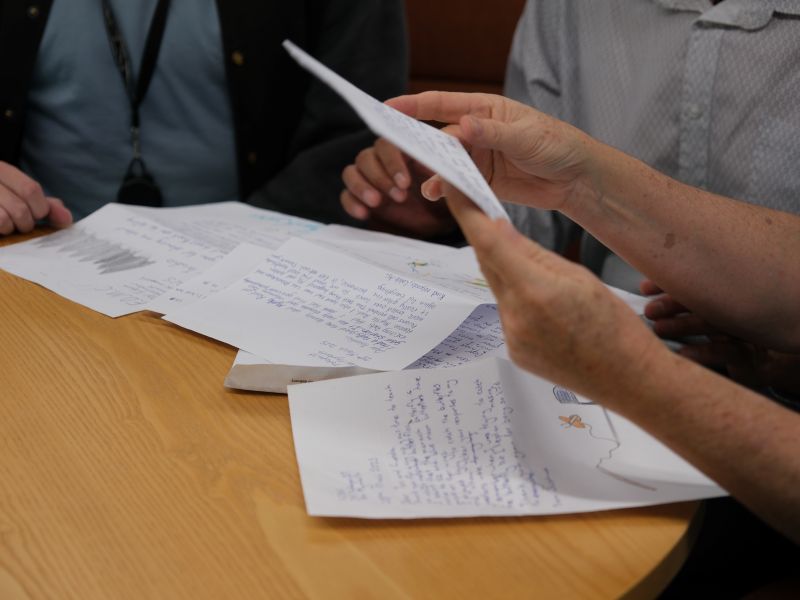Blown Away - Issue 3
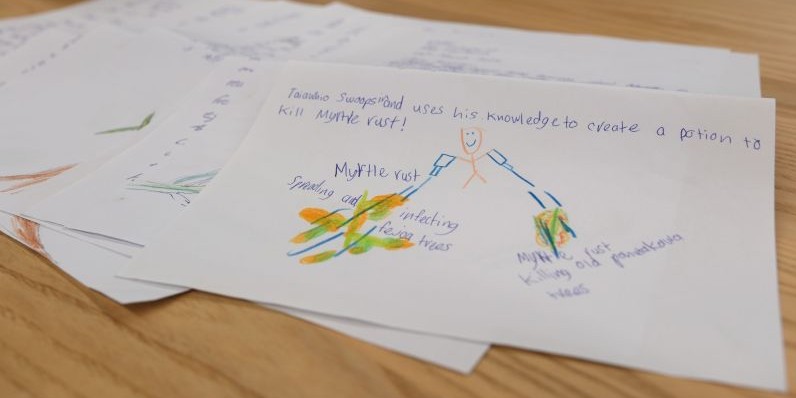
This is the third in a series of bi-annual newsletters sharing updates on the progress, team, and unexpected discoveries from this research programme.
New Zealand faces ongoing risks from insects and pathogens blown here on the wind—an often-overlooked gap in our biosecurity defences, and one likely to grow with climate change. The Protecting Aotearoa from Wind-Dispersed Pests programme is addressing this challenge over the next five years by improving knowledge of in-transit pest survival, updating wind models, and tracking how and when organisms move through the air. The goal: a predictive warning system to help us respond faster and more effectively.
Taranaki outreach day impact
Rachael Felt
Researchers from the Scion and AgResearch groups of the Bioeconomy Science Institute and the University of Canterbury partnered with Taranaki Regional Council educators for a Science Day at Pukeiti Gardens in March – bringing science to life through collaboration.
About 150 students took part in hands-on learning, focused on the vital role biosecurity plays in protecting Aotearoa’s forests and landscapes. They explored the science behind pest detection and management, learning how wind-dispersed pests threaten native ecosystems and how researchers are developing innovative tools to detect and respond to these risks.
The students’ enthusiasm was unmistakable. More than 30 thank you notes arrived in the weeks following the event, filled with personality, curiosity and appreciation. Their messages are a powerful reminder of the lasting impact science outreach can have in inspiring the next generation of environmental guardians.
These messages reflect the success of the day and the growing awareness and excitement around the science of biosecurity – one of the key focus areas of our research programme.
"Thank you again for making science interesting."
"Something funny I remember is going to two stations before going to the right one. Thank you for teaching us everything."
"Taiāwhio swoops in and uses his knowledge to create a potion to kill myrtle rust.” See illustration at the start of the newsletter.
"Thank you for giving up your time to teach us about moths and butterflies. I enjoyed trying to catch the butterflies and remember how clear your responses were to my questions."
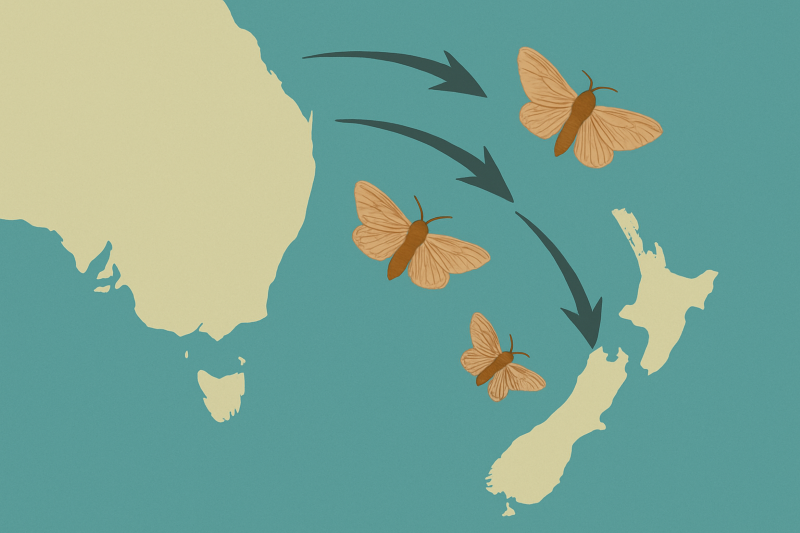
How moths and butterflies reach Aotearoa – and why it matters
Mike Davy & Toni Withers
One of the unique ecological aspects of Aotearoa is our isolation from the rest of the world. The distance provides us protection from biosecurity threats and prevents regular dispersal by all but the most capable migrants. Of our 1,700+ Lepidoptera species (moths and butterflies), 87% are found only in New Zealand, while the remaining 13% are considered non-endemic.
What are we likely to get?
Using data from published literature, government reports, and iNaturalistAU, we have compiled a database containing key features of our non-endemic Lepidoptera to find trends associated with establishment in New Zealand through the aerial pathway. So far, we have found that non-endemics associated with this pathway tend to have larger wingspans, a recorded history of long-distance dispersal/migratory behaviour, and have a high number of observations on iNaturalistAU.
After an initial look into the most abundant moths on iNaturalistAU, we quickly identified three commonly observed migratory species with decent wingspans, that pose a risk to our pasture and/or crop industries. These include the sugarcane looper, the lawn armyworm, and the southern armyworm, which have been spotted on our shores before, but none are known to have established yet. Given enough time, species like these may get multiple opportunities to ride along air bridges, perhaps in high enough numbers to establish successfully in Aotearoa. We’d best be prepared.
Where did they come from?
About 65% of our non-endemic Lepidoptera originate from elsewhere in Australasia, and most others from Europe and/or Asia. In addition, an incredible 91% of our non-endemic Lepidoptera are present in Australia, regardless of their native origin, making presence in Australia one of the best predictors of invasion risk to New Zealand.
How did they get here?
This question is much harder to investigate without the use of a time machine. We are unsure about how around half of our non-endemic Lepidoptera arrived in New Zealand, but at least 11% are thought to have been accidentally imported here via ships or planes. This pathway has tightened up a lot over the past few decades, with surveillance efforts targeted around ports and airports.
The other major pathway is the aerial pathway, whereby moths, butterflies, and other organisms disperse to Aotearoa through the air, facilitated by large atmospheric structures called ‘air bridges’. For at least the past 100 years scientists have suspected moths and butterflies use this pathway, so it’s not a new theory. However, it is still highly relevant today as there are many Lepidoptera present in Australia that we do not want here. Approximately 25% of our non-endemic Lepidoptera are thought to have blown over with prevailing winds from Australia. When teasing out our non-endemic species into macro-Lepidoptera (newer lineage, typically larger), and micro-Lepidoptera (older lineage, typically smaller) we find that an astounding 71% of the macro-Lepidoptera and only 5% of the micro-Lepidoptera have come to Aotearoa on the wind.

Male specimen of Ichneutica dundastica captured at Maunganui Bridge, Taranaki Maunga. Identified by Dr Robert Hoare, this moth is notable for the strikingly long pectinations (branch-like extensions) on its antennae —specialised structures that help detect the female’s sex pheromone.
New discoveries on Taranaki Maunga: a win for native moth research
Toni Withers
While surveying Taranaki Maunga for migratory macro moths that may have flown in from Australia, our research team continues to uncover exciting new information about native species.
Researchers have recently confirmed the presence of a rare native moth species, Ichneutica dundastica, on Taranaki Maunga. Both a male and a female were collected during night-time light trapping. This species was first described in 2019 by Dr Robert Hoare and, until now, had only been recorded in the Tararua Ranges in the Wellington region. Ichneutica dundastica typically lives in alpine shrublands, and very little is known about its host plants or life cycle.
Identifying moth species like this is no easy task. After fieldwork, researchers bring a selection of specimens back to the lab. There, they carefully spread the wings, photograph the moths, and upload the images to our Wind Wanderers iNaturalist page. Expert lepidopterists Dr Robert Hoare and Neville Hudson then step in to help with identification. It can be a challenge—especially with groups like the “owlet moths,” which often have very subtle differences in their wing patterns.
This is our second exciting discovery – in our previous newsletter Blown Away 2, we reported the discovery of a native carpet moth—Tatosoma monoviridisata found on the Maunga for the first time. Each new discovery is a cause for celebration. Sean Zieltjes, Poutohu Matua Taurua / Co-Project Director of the Taranaki Maunga Project, says it’s great news:
“It's helping deepen our understanding of the rich biodiversity on Taranaki Maunga. We look forward to hearing what the next moth survey brings."
Our work on the Maunga continues, and with each survey, we’re learning more about the incredible and often hidden biodiversity of this iconic landscape.
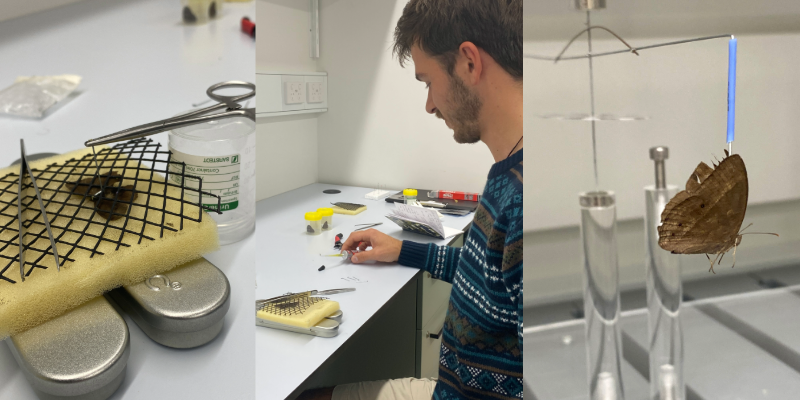
Taking flight: learning to track moths in Australia
Toni Withers
In June, our PhD student Lorenzo Orlando (University of Canterbury) and programme co-lead Dr Toni Withers travelled to Townsville, Australia, for a hands-on research visit to the insect behaviour lab of Dr Myles Menz at James Cook University. Dr Menz has dedicated his career to understanding insect flight and migration, from tracking hawk moths in the European Alps with radar and tiny tags, to studying hoverflies on long-distance journeys.
During the visit, Lorenzo and Toni learned the latest techniques for studying moth flight in the laboratory. These skills will support Lorenzo’s PhD research on pest species such as the Armyworm moths, known to be strong fliers and serious agricultural threats. By testing moths under different environmental conditions and measuring their energy use in flight, he aims to uncover how factors such as rainfall and reduced air pressure—similar to those experienced high in the atmosphere—affect their performance during migration.
We are deeply grateful to Dr Menz for sharing his expertise and for hosting such a valuable learning opportunity. This visit has strengthened our research and laid the foundation for future collaborations.
Meet the team
This time we are shining the spotlight on the researchers involved in Research Area 3: Atmospheric survival.

Dr Mark Jermy
University of Canterbury
Mark earned his BSc (Hons) in Physics from the University of Birmingham (1993) and a PhD from the University of Kent (1997). After working with the UK Ministry of Defence and Cranfield University, he joined the University of Canterbury in 2005. He teaches fluid mechanics to engineering and forensic science students, and studies how particles move in fluids — from infectious droplets and blood spatter to fuel sprays, herbicides, and wind-borne seeds. In our programme, he supervises PhD student Lorenzo Orlando, investigating how pest moths survive and fly during long-distance atmospheric journeys.

Lorenzo Orlando
University of Canterbury
Lorenzo is a PhD student in Mechanical Engineering at the University of Canterbury. His research focuses on understanding how environmental factors, particularly rainfall, affect the flight performance and survival of migratory moth species. Lorenzo is developing a controlled-environment flight facility to simulate trans-Tasman migration conditions and to study insect flight behaviour under varying atmospheric conditions. His work aims to improve predictions of invasive species incursions and strengthen biosecurity measures for New Zealand.
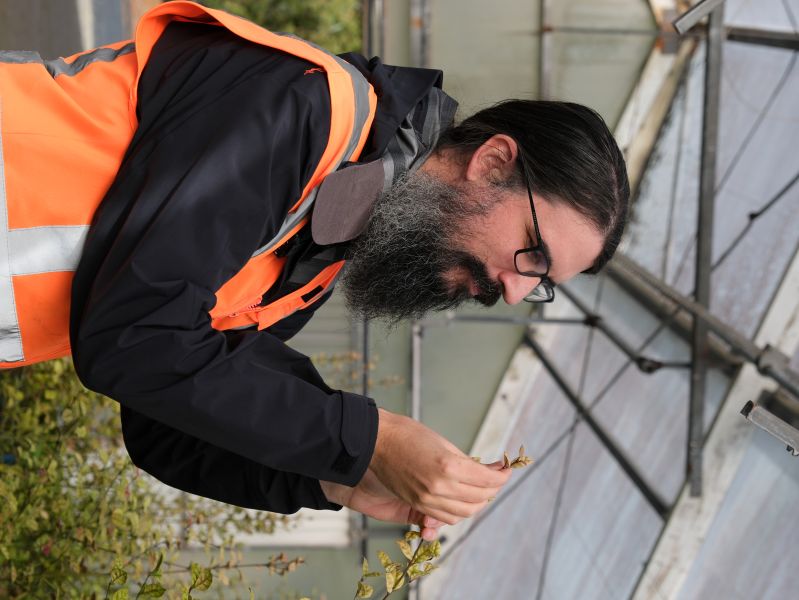
Dr Michael Bartlett
Scion Group, Bioeconomy Science Institute
Michael is a forest pathologist at Scion, who’s research is focused on understanding the ecology, evolution and impact of forest pathogens. His previous research looked at the impact and adaptive potential of the myrtle rust pathogenin New Zealand. In this programme, Michael is investigating the ability of poplar rust spores to survive conditions faced during atmospheric travel.
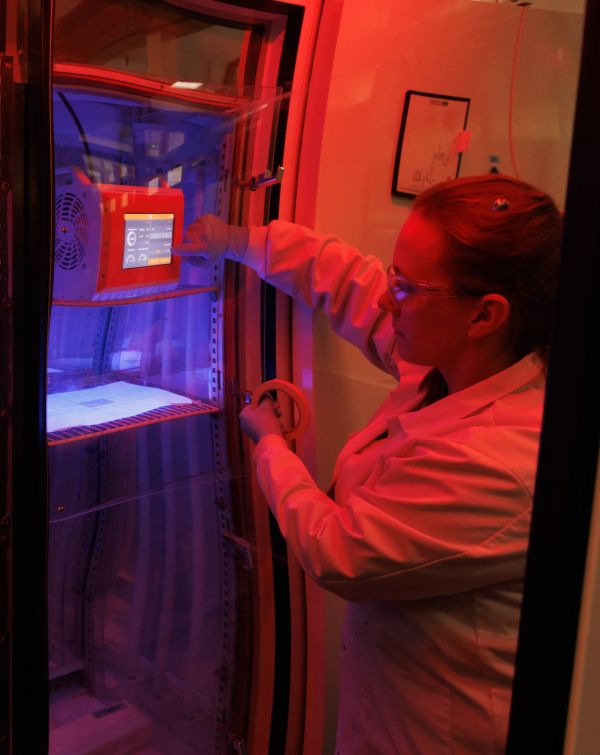
Dr Emily McLay
Scion Group, Bioeconomy Science Institute
Emily is a plant pathologist at Scion focusing on the climate drivers of forest diseases. She has looked at how light, temperature, moisture and other factors can influence diseases such as red needle cast and lettuce downy mildew. She is now setting her sights higher – to the troposphere – to see how these extreme climates may impact the survival of rust pathogens.
Not yet subscribed?
If you haven’t already, subscribe to this biannual newsletter to stay up to date with programme changes, results, events and more — sign up here.

